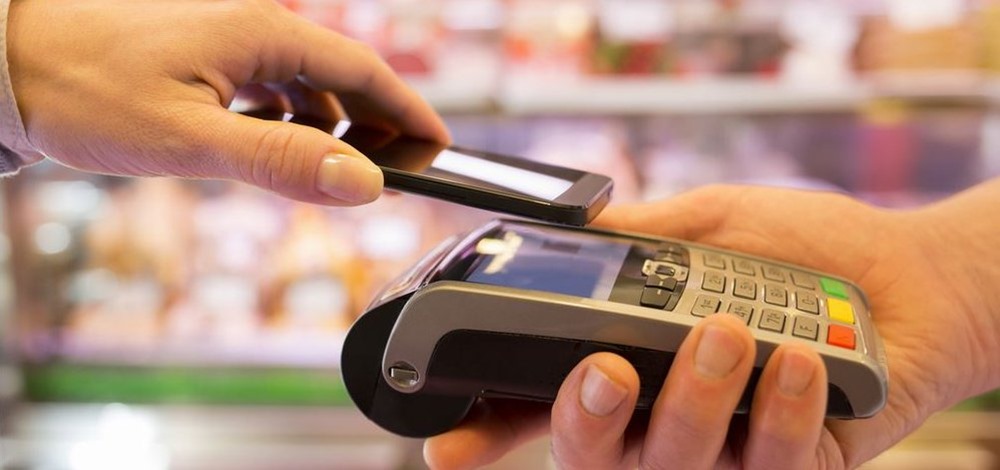A Sure Sign Of Progress: E-payments Surpass Paper-based Payment Methods In India

In November 2015, the electronics payment methods have again accounted for more transactions in India than the traditional methods like drafts, and cheques. This is a green signal to government’s plan to incentivize paper-less transactions in the country via the upcoming budget.
According to RBI, such a reversal in payment modes was first witnessed in September 2015. In November last year, a total of Rs. 6,32,587 crore was transferred through electronic payment methods in contrast to Rs. 6,17,845 crore transferred via paper clearances.
This can be seen as a result of Union Ministry’s draft proposal to shift to non-cash transactions in the country via suitable incentives. The government is also expected to introduce such an incentive structure for the public to push electronic transactions in the country.
“They will come into effect from April,” said an official from the Finance Ministry.
Why Is The Govt. Pushing For Electronic Payment Modes?
Making payments via electronic media not only saves time but also helps in easy book keeping. Online payments would also help keep a check on black money and that’s why cashless transactions was one of the suggestions from banks and financial institutions to the finance minister at a pre-budget meeting.
What Incentives Are Coming Our Way?
Government could offer various incentive structures for promoting cashless transactions in the country. It could also be something like a person getting more monetary gains by transacting online than by withdrawing cash.
“Say if a person receives Rs.100 through direct benefit transfer, he/she would be able to purchase or avail services worth Rs.102 if electronic methods of payment are used. But if she cashes out, it will be just Rs.100,” said another official from the finance ministry on the condition of anonymity.
All government departments are also working towards facilitating e-transactions for all payments and receipts by the end of the current fiscal on 31 March.
The Payment Scenario In India
In India’s GDP, a lion’s share of monetary transactions is occupied by currency notes and coins and stands at 12.04%. Even smaller developing countries have much less cash transactions as a percent of their GDP.
It stands at 3.93%, 5.32%, and 3.72% for Brazil, Mexico, and South Africa respectively, according to ‘Cost of Cash in India’ survey conducted by MasterCard Inc. and The Fletcher School’s Institute for Business in the Global Context in 2014.
The total cost incurred for storing, transporting, and processing physical cash in India stands at a staggering Rs. 21,000 crore.
So, if the country moves a major chunk of its transaction moves to cashless modes, then it will save a lot of money in the process which can then be utilized at other important places for further economic development.
Also according to a report by Payment Council of India and PwC, cash amounts to a total of 98% as a mode of consumer payments in India while it is just at 55%, and 48% in developed countries like U.S., and U.K. respectively.
RBI has also observed that, though the use of cashless transactions is one the rise, the ticket size of these transactions remains very small. For instance, in November 2015, 99.82 million e-payments amounted to just Rs. 6,32,587 crore while 81.37 million paper-based settlements amounted to Rs. 6,17,845 crore.
This takes the average ticket size for e-payments to about Rs. 63,373 while that of paper-based modes to about Rs. 75,930.
To cover up for huge difference in average ticket size, many commercial banks are extensively promoting their customers to use digital payment modes.
“This is going to be a sustainable trend. All the banks are trying to ensue that the digital channels are efficient and accessible from various platforms to bring convenience. Digital payments are much safer than cheques which could get misplaced or signatures may not match. We are even following up with corporates to adopt digital channels”, said Arundhati Bhattacharya, Chairperson, SBI.
The government is also trying to push the e-payment transactions in rural areas by asking various departments to transfer the money related to direct benefit transfer schemes directly into the beneficiary accounts.
Electronic transactions have also increased in Tier-II and tier-III towns in the country. The move to put caps on ATM withdrawals is also affecting consumer behavior and might also be another reason for them to opt for digital payments.
Now, we are eagerly waiting for the upcoming budget session to see what government has to offer for incentivizing cashless transactions. For one thing is certain, if you pay your bills and do recharges online, then you will gain a lot from this.
